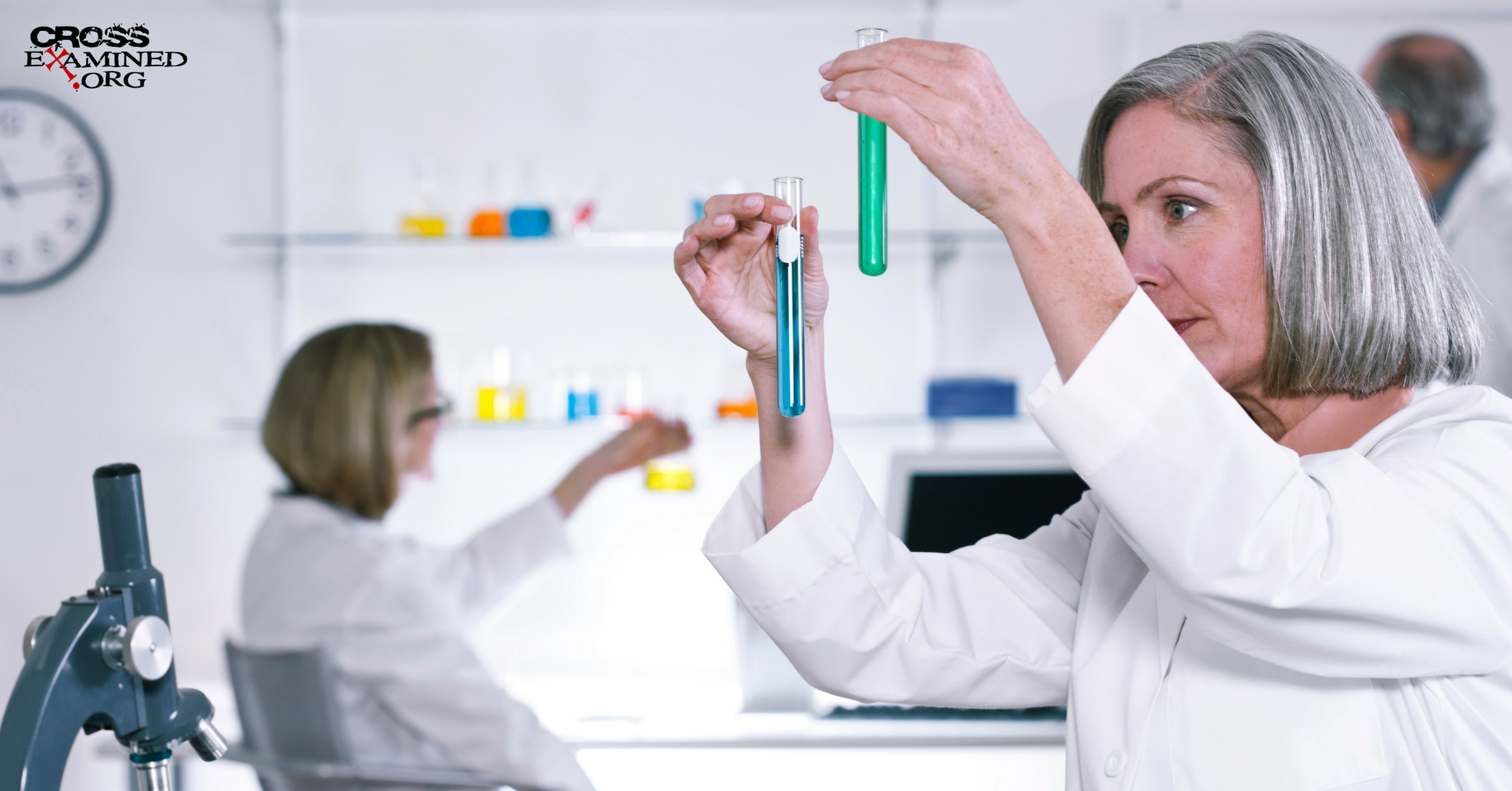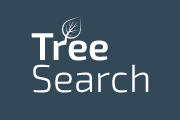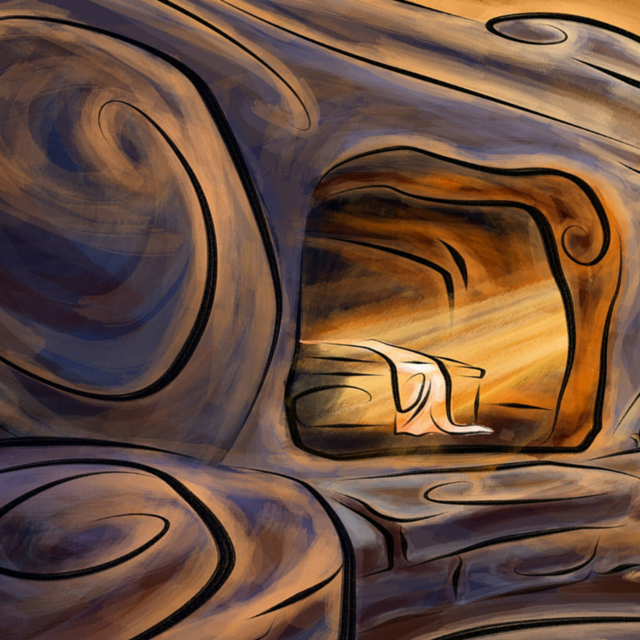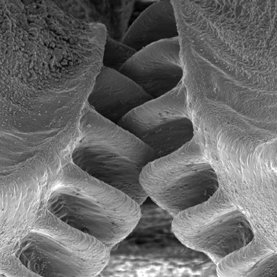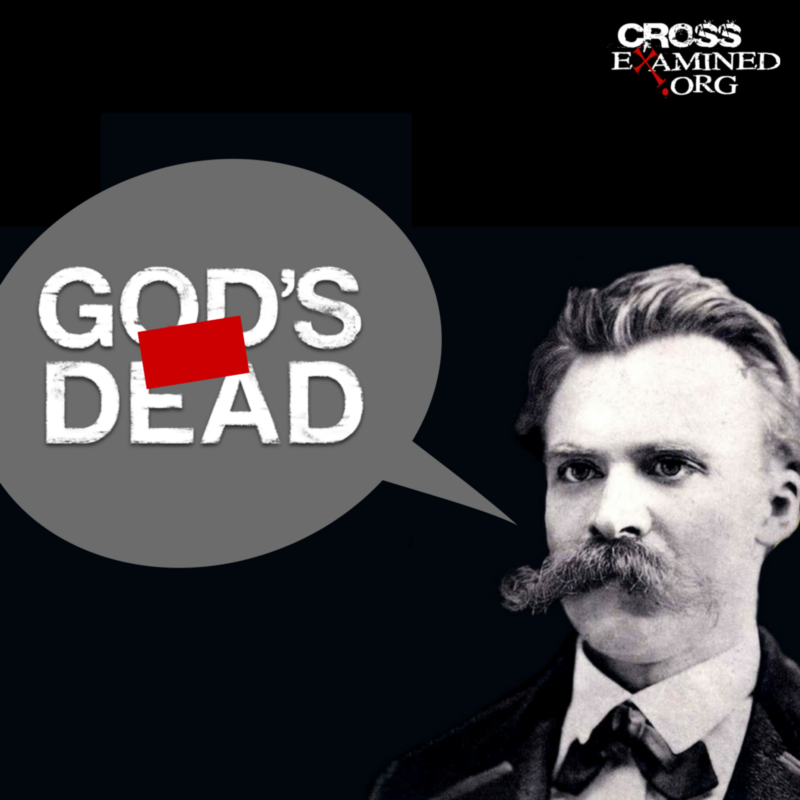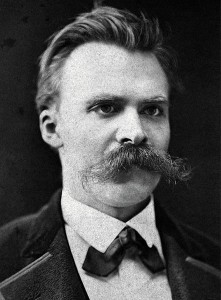Last year Christianity Today named their top ten archaeological discoveries of 2013. On the top of the list was an object that looks like a small insignificant amulet carved from stone. As it turns out, the object was a scarab from the 18th Dynasty of Egypt – very likely from the reign of Thutmose III or Amenhotep II based on parallels. The significance for those who believe in the Biblical accounts of the Conquest of Canaan as outlined in the Old Testament book of Joshua is great! The scarab is a key piece of evidence excavated last year at an archaeological site situated approximately 9 miles north of Jerusalem. That site is called Khirbet el-Maqatir and the evidence points to it as the city of Ai which the Old Testament (in Joshua 8) states was destroyed by Joshua in around 1406 B.C..
Podcast: Play in new window
Subscribe: Apple Podcasts | Spotify | Amazon Music | Android | iHeartRadio | Blubrry | Email | TuneIn | RSS
Suppose that there were no scientific evidence whatsoever for the existence of God, would that disprove God? Or would that necessarily make it irrational to believe in God?
I argue that it wouldn’t – such an overly-skeptical view reveals a flawed epistemology (theory of knowledge). One who makes such a claim is apparently adhering to a strong form of scientism, the view that science is the only source of knowledge. For, there are many non-scientific reasons for belief in God, such as:
- Philosophical arguments– such as the moral argument, the Leibnizian cosmological argument, etc.
- Fulfilled prophecies
- Historical evidence for the resurrection
- Religious experience – it’s at least possible in principle that God could reveal Himself through experiences that would justify belief in Him for that person even if not necessarily for others without this evidence
The purpose of this blog is not to explore these non-scientific arguments but merely to point out that one cannot call belief in God irrational without also refuting these types of non-scientific arguments. Explore the hypertext links for sampling if you’re unfamiliar with these arguments. The claim that science is the only source of knowledge is self-refuting – it’s a philosophical claim that cannot be scientifically demonstrated so if science is the only source of knowledge one could not rationally affirm it. Dr. Turek’s Roadrunner Tactic (of applying a claim to itself) reveals this pretty clearly. Most philosophers have long since abandoned this overly narrow epistemology, but unfortunately, some scientists still hold to it.
Too often skeptics point to prominent scientists who are atheists as though that somehow shows that belief in God must be irrational. I confess that I myself, unfortunately,y went through a period of doubts in the late 1990’s in part because of this fear of how so many of these smart scientists could think that there is no evidence of God.
But is science really even the appropriate discipline for determining God’s existence?
I later came to realize the folly of assuming scientists are best-suited for evaluating evidence for God. Sure a disproportionate number of really intelligent people are scientists but are they really trained so as to be able to best evaluate potential evidence for God? Clearly, they are not trained to evaluate any of the non-scientific evidence I listed above. Many of the most vocal atheistic scientists such as Krauss, Dawkins, and Hawking make numerous philosophical mistakes.
Moreover, science is generally defined such that no appeal to the divine is even considered – this is known as methodological naturalism. Thus, both the nature of the knowledge taught to scientists as well as the methodology they learn for evaluating evidence are not well-suited for evaluating the breadth of evidence and arguments about God.
Dr. Ed Feser, who has been on the CrossExamined podcasts here and here, has an excellent rebuttal to scientism. He critiques Alex Rosenberg’s argument that science can show that God doesn’t exist. First, here is Feser’s summary of Rosenberg’s argument:
1. The predictive power and technological applications of physics are unparalleled by those of any other purported source of knowledge.
2. Therefore what physics reveals to us is all that is real.
Feser goes on to explain: “How bad is this argument? About as bad as this one:
1. Metal detectors have had far greater success in finding coins and other metallic objects in more places than any other method has.
2. Therefore what metal detectors reveal to us (coins and other metallic objects) is all that is real.
Metal detectors are keyed to those aspects of the natural world susceptible of detection via electromagnetic means (or whatever). But however well they perform this task — indeed, even if they succeeded on every single occasion they were deployed — it simply wouldn’t follow for a moment that there are no aspects of the natural world other than the ones they are sensitive to. Similarly, what physics does — and there is no doubt that it does it brilliantly — is to capture those aspects of the natural world susceptible of the mathematical modeling that makes a precise prediction and technological application possible. But here too, it simply doesn’t follow for a moment that there are no other aspects of the natural world.”
But there is also Scientific Evidence for God!
I don’t intend any disrespect for science in this blog – I should mention that I myself have a degree in physics and have worked in scientific/mathematical domains of software engineering for the past 27 years. I have great respect for science and actually, I think that God has also left plenty of scientific evidence for His existence. This blog is an introduction to a series making a case that what we have learned from science actually does support theism over atheism. It’s important, however, to keep things in perspective! Scientific knowledge is just one aspect of knowledge and a skeptic who hasn’t searched out the non-scientific forms of evidence is making a big mistake. Nevertheless, the church too often provides no response or a weak response to challenges to belief in God from atheistic scientists. I think, therefore, that it is important to look at whether or not there are theistic implications from origins science. Over the next few weeks I’ll be making a case in this blog that the following aspects of science provide evidence that God exists:
- Origin of Universe
- Origin of the Laws to Support Life
- Fine-Tuning of the Initial Conditions of the Universe to Support Life
- Fine-Tuning of the Constants of Nature
- Origin of Life
Before we get into the evidence, in my next blog I’ll discuss what would constitute suitable evidence for God from science and some of the objections that invariably arise. A careful philosophical evaluation is in order before laying out the facts so that we can properly interpret them.
Frank Turek with the world’s most credentialed and likable apologist, Dr. John Lennox.
These are the Top 20 Christian Apologists from whom I’ve learned much. They were the subject of today’s radio program.
Outside of Dr. Norman Geisler being in the top spot (since I studied under him for several years), the rest are not necessarily in order. Do I agree with everything these people say? No. (I don’t even agree with everything I say!) But I think you’ll find a wealth of wisdom and practical insights about the truth of Christianity from these men and organizations. Many of these men have appeared on our radio program. You can listen to them anytime by downloading our free app here.
- Norm Geisler: normangeisler.com
- William Lane Craig: Reasonable Faith.org
- J. Warner Wallace: ColdCaseChristianity.com
- John Lennox: John Lennox.org
- Greg Koukl: STR.org
- Paul Copan: PaulCopan.com
- Ed Feser: http://edwardfeser.blogspot.com/
- Lee Strobel: Lee Strobel.com
- Josh McDowell: Josh.org
- Discovery Institute (Dembski, Meyer, Richards, Luskin, Wells): www.Discovery.org
- C.S. Lewis: CSLewis.org
- Gary Habermas: GaryHabermas.com
- Timothy McGrew: http://historicalapologetics.org/
- Dr. Michael Brown: AskDrBRown.org
- Richard Howe: Richardghowe.com
- Tim Keller: TimothyKeller.com
- J. Budziszewski: Undergroundthomist.org
- Hank Hanegraaff: Equip.org
- Hugh Ross: Reasons.org
- R. C. Sproul: Ligonier
Bonus (includes some cultural commentators):
Imagine equipping everyone in the world with something like a pocket-apologist, an Artificial Intelligence available to present for you customized evidences supporting Christianity and to offer instant scholarly answers to complex questions. Well, it looks like a website is in development to do something like this. It is called “Treesearch” (beliefmap.org) and seems like it will be a pretty novel apologetics debate encyclopedia. The content branches out debate points and counter-points (green vs. red) in a way that simulates dialogue, which makes navigation surprisingly intuitive, fast, and even fun. I will also say this: you can tell that it is being designed with smart phone users in mind, which could be really effective for experienced and lay apologists in the field (e.g. here is a more developed section so you can see how it opens up). It seems full of potential, and I look forward to seeing how it will grow.
There has been a lot of debate against my recent articles that stems from a common mistake made by atheists. This article is a little more in depth, but if you can get this you will really have something good to chat about with your atheist friends.
Many of you who are Christians may struggle with the arguments made by atheists against our beliefs. You’ve heard it before that believing in God is the same as believing in Unicorns, Fairies, Santa Claus and the like. An opponent challenged me to prove that God wasn’t just another one of these superstitious characters.
Atheists will use these superstitious characters in one of two ways usually: 1) They will show the absurdity of believing in imaginary creatures and use that as an analogy for believing in God, or 2) They will ask you if you believe in Unicorns, Fairies, and Santa Claus and when you say, “no” they will try and turn the tables on you and say, “see, now you show me your evidence for not believing in those things.”
Another very popular argument was born in Stephen F. Robert’s statement made to Theists in 1995 (later popularized by Richard Dawkins) that, “I just believe in one fewer god than you do. When you understand why you dismiss all the other possible gods, you will understand why I dismiss yours.”
This is a common misunderstanding and conflation of 1st and 2nd order questions. Listen up. This will help you.
A first order question for our purposes explores the “what” of God. In other words, what is the general idea of a being that is God? An answer from Alvin Plantinga explains that this idea of God is something “having an unsurpassable degree of greatness—that is, having a degree of greatness such that it’s not possible that there exist a being having more.”
It is impossible to have two beings (or more) that possess an infinite degree of greatness. It is a metaphysical impossibility. A universe with two or more omnipotent, or supreme, or infinite beings is absolutely impossible.
Now, a second-order question explores types or the “who” of God. The answer can be many possible conceptions of God.
A Theist rejects all other conceptions of God without being an “atheist” about Thor, Odin, etc. because what makes a person a Theist is not the “who” or type of God but the “what” or nature of God. Rejecting the Thor and Odin “who” type conceptions of god goes hand in hand with the positive acceptance of the Theist “what” type of God. I’m not just disbelieving in the others. I’m believing in One that eliminates the others altogether. It’s like killing a thousand birds with one stone.
So when you ask me to show that God is not a superstition or ask me to prove that Thor isn’t God, you are conflating the “what” is God and the “who” is God questions. The Christian God is outside of time, without matter, and is not confined by the material universe. Unicorns, fairies, Santa Claus, Thor, Odin, Wotan, Zeus, Ashara… are technically still possible in a logical sense, but since they are within time, composed of matter and confined by the universe, they are inferior.
Finally, most people who reject God are rejecting a figure that I would reject also. The “what” of God is often times assumed, as if we Christians believe in a Family Guy type god who sits on a cloud, wears a white toga, and smites people. If we can get on the same page about what God is, a lot of these common questions will answer themselves or just not be applicable.
A Look at “The Creed” Through History & Archaeology
For I delivered to you first of all that which I also received: that Christ died for our sins according to the Scriptures, that He was buried, and that He rose again the third day according to the Scriptures, and that He was seen by Cephas, then by the twelve. After that He was seen by over five hundred brethren at once, of whom the greater part remain to the present, but some have fallen asleep. After that He was seen by James, then by all the apostles. Then last of all He was seen by me also, as one born out of due time (1 Cor. 15:3-8)
One of the earliest records of the events surrounding the first Easter was recorded in an early saying or “creed” which the Apostle Paul mentions in his epistle (or letter) in 1 Corinthians 15:3-8. It has been called the first Christian “creed” or Credo [Latin for ‘I believe’]. Although Paul refers to it, it is not original to him; it is Pre-Pauline. It very likely dates back to the earliest followers of Jesus – His first Disciples – those who waked with Him, lived with Him, those who watched the drama of His life unfold before their eyes…those who watched Him die…those who ate with Him and spoke with Him and saw Him after He reportedly arose from the dead.
Part of how we know whether or not something happened in the past or not is through eyewitness testimony. Eyewitnesses can be reliable or not. One way (certainly not the only way) we can test whether an eyewitness is speaking the truth is through internal and external evidence that is consistent with other verifiable facts in a particular time period. Unlike mathematics or deductive logic, history allows us to make inferences based on the evidence that we have at hand as we study it carefully and determined if it is reliable.
From this early creed – I would like to consider three facts[1] that it is indeed genuine and bears the key marks of an authentic record of a monumental historical event – namely that Jesus did, in fact, rise from the dead.
Scientists continually tell us that certain features found in nature are not “designed” but are the product of unguided evolutionary development. In his book The Blind Watchmaker biologist Richard Dawkins curiously has to remind his readers and warn them that some things in nature may appear designed when in fact they are not. He wrote that, “Biology is the study of complicated things that give the appearance of having been designed for a purpose.”
A recent article posted by Christian apologist, Melissa Cain Travis, offers some compelling reasons that nature is in fact, designed. Many of these designs are copied either unconsciously or consciously (via the science of Biomimicry) by humans. The most reasonable inference is that these designs come from an Intelligent Creator.
You can read about it here
If Dr. Richard Dawkins is the atheist’s rock star of biology, Dr. Lawrence Krauss is the atheist’s rock star of physics (maybe only second to Stephen Hawking). An engaging speaker and winsome personality, Dr. Krauss is a theoretical physicist and professor at Arizona State University. In his book A Universe from Nothing, Krauss seeks to answer the age-old question, “Why is there something rather than nothing” without reference to God.
Dr. Krauss says the cause of the universe is not God—it is “nothing.” He cites happenings at the quantum level to dispense with the need for God. (The quantum level is the world of the extremely small, subatomic in size.)
“One of the things about quantum mechanics is not only can nothing become something, nothing always becomes something,” says Dr. Krauss. “Nothing is unstable. Nothing will always produce something in quantum mechanics.”[i]
Now, whenever you hear something that just doesn’t sound right, you ought to ask the person making the claim, “What do you mean by that?” In this case, the precise question to Dr. Krauss would be, “What do you mean by ‘nothing’?”
It turns out that Dr. Krauss’ definition of “nothing” is not the “nothing” from which the universe originated. The initial starting point of the universe was not the quantum vacuum that Dr. Krauss keeps referring to in his book. The starting point was non-being– literally no thing. Since no thing isn’t anything, there are no properties to work with. Nothing is, as Aristotle put it, what rocks dream about. Unless someone powerful intervenes, the ancient maxim still stands: out of nothing, nothing comes.
A quantum vacuum, on the other hand, is something—it consists of fields of fluctuating energy from which particles appear to pop in and out of existence. Whether these particles are uncaused, or are caused but are merely unpredictable to us, is unknown. There are ten different models of the quantum level, and no one knows which is correct. What we do know is that, whatever is happening there, it is not creation out of nothing. Moreover, the vacuum itself had a beginning and therefore needs a cause.
Lest you think I am mad to question the physics of Dr. Krauss, please note that I am more questioning his logic, which is required to do science of any kind. Dr. Krauss is committing the logical fallacy known as equivocation—that is using the same word in an argument but with two different definitions. The “nothing” in the title of Dr. Krauss’ book is not the “nothing” from which the universe came.
This critical distinction was not lost on fellow atheist Dr. David Albert. A Ph.D. in theoretical physics, Dr. Albert is a Professor at Columbia University and author of the book Quantum Mechanics and Experience. In his scathing review of Krauss’ book in the New York Times, Dr. Albert questions both Krauss’ logic and his physics. He pulls no punches and even uses his fist to illustrate.
Commenting on Krauss’ central claim that particles emerging from the quantum vacuum are like creation out of nothing, Dr. Albert writes:
But that’s just not right. Relativistic-quantum-field-theoretical vacuum states — no less than giraffes or refrigerators or solar systems — are particular arrangements of elementary physical stuff. The true relativistic-quantum-field-theoretical equivalent to there not being any physical stuff at all isn’t this or that particular arrangement of the fields — what it is (obviously, and ineluctably, and on the contrary) is the simple absence of the fields! The fact that some arrangements of fields happen to correspond to the existence of particles and some don’t is not a whit more mysterious than the fact that some of the possible arrangements of my fingers happen to correspond to the existence of a fist and some don’t. And the fact that particles can pop in and out of existence, over time, as those fields rearrange themselves, is not a whit more mysterious than the fact that fists can pop in and out of existence, over time, as my fingers rearrange themselves. And none of these poppings — if you look at them aright — amount to anything even remotely in the neighborhood of a creation from nothing (emphasis in the original).[ii]
Speaking of fists, Dr. Albert lands the knockout blow to Krauss’ entire thesis this way, “But all there is to say about this, as far as I can see, is that Krauss is dead wrong and his religious and philosophical critics are absolutely right.” (It’s important to note that Dr. Albert and Columbia University are not known for Christian fundamentalism.)
Now Dr. Krauss didn’t take all this lying down. He got up off the canvas and fought back by calling Dr. Albert “a moronic philosopher.”[iii]
Well, that solves that then. If the guy’s a moron, the non-moron must be right. Right? Actually, on several occasions in this book, Dr. Krauss confuses even non-moronic readers when he admits Dr. Albert’s point in advance—namely, that the “nothing” Krauss is talking about is not exactly the nothing from which the universe came. Dr. Krauss even puts his “nothing” in quotation marks like I just did.
In an interview, Krauss acknowledges that no matter how one defines “nothing,” the laws of physics are not nothing (sorry to keep using the word nothing, but there’s nothing else to use!). And although he’s clearly annoyed doing so, Dr. Krauss eventually gets around to admitting that his “nothing” is actually something.
“Even if you accept this argument that nothing is not nothing,” he says, “you have to acknowledge that nothing is being used in a philosophical sense. But I don’t really give a damn about what ‘nothing’ means to philosophers; I care about the ‘nothing’ of reality. And if the ‘nothing’ of reality is full of stuff, then I’ll go with that.”[iv]
So if Dr. Krauss admits all this, why the bait and switch title: “A Universe from Nothing: Why there is something rather than nothing”? Why smuggle in the laws of physics and the quantum vacuum and then call it “nothing”? Why diss philosophers who are only trying to bring the book’s assertions back to reality?
Dr. Krauss seems to think that philosophers are not talking about reality, when in fact, that’s exactly what philosophy is—the study of ultimate reality. The problem for Krauss is two-fold.
First, reality is not merely physical stuff. Since nature and the laws of physics themselves had a beginning, ultimate reality is beyond nature or supernatural. So despite claiming to explain how the universe came from nothing, Krauss has explained nothing.
The second problem is a far more serious intellectual disease that infects the thinking of Krauss and several other prominent atheists as well. This disease is so severe that it threatens the accuracy of the very science they seek to promote. Krauss, like Dawkins and Hawking, are dismissive of philosophy.
Now, having studied a lot of wacky philosophy myself, I sympathize with them. But the existence of wacky philosophy doesn’t discredit the existence of good philosophy any more than the existence of wacky science discredits the existence of good science. While it is true that one can use bad philosophy, it is impossible to use no philosophy.
In fact—and this is the essential point—Krauss, Dawkins and the like can’t do science without philosophy. While scientists are usually seeking to understand physical cause and effect, science itself is built on philosophical principles that are not physical themselves—they are beyond the physical (metaphysical). Those principles help the scientist make precise definitions and clear distinctions and then interpret all the relevant data rationally.
What exactly is relevant? What exactly is rational? What exactly is the best interpretation of the data –including what exactly is or isn’t “nothing”? Those questions are all answered through the use of philosophy. (Perhaps that’s why the “Ph.” in Ph.D. stands for “philosophy.” The originators of advanced degrees knew that philosophy is the foundation of every area of inquiry.)
Einstein had an observation about the man of science. He said, “The man of science is a poor philosopher.” Unfortunately, if you abandon good philosophy you end up with bad science. And if you disdain all philosophy, as Krauss and company tend to do, then you put yourself in the self-defeating position of holding a philosophy that disdains all philosophy. You can’t get away from philosophy. It’s like logic. To deny it is to use it.
In the end, despite the lofty promises of his book’s title, Dr. Krauss explains nothing about the ultimate origin of the universe.
Notes
[i] Opening statement of Lawrence Krauss in his debate with Dr. William Lane Craig, http://www.reasonablefaith.org/the-craig-krauss-debate-at-north-carolina-state-university#ixzz2bwKlOhe1. See also Dr. Krauss’ book, A Universe from Nothing: Why There Is Something Rather than Nothing, Atria Books, 2012,Chapter 10.
[ii] David Albert, “On the Origin of Everything ‘A Universe From Nothing,’ by Lawrence M. Krauss,” The New York Times, March 23, 2012, http://www.nytimes.com/2012/03/25/books/review/a-universe-from-nothing-by-lawrence-m-krauss.html?_r=0.
[iii] Ross Anderson, “Has Physics Made Philosophy and Religion Obsolete?”. The Atlantic, April 2012, http://www.theatlantic.com/technology/print/2012/04/has-physics-made-philosophy-and-religion-obsolete/256203/.
[iv] Ross Anderson, Ibid.
Recommended resources related to the topic:
God’s Crime Scene: Cold-Case…Evidence for a Divinely Created Universe (Paperback), (Mp4 Download), and (DVD Set) by J. Warner Wallace
God’s Crime Scene: The Case for God’s Existence from the Appearance of Design (mp4 Download Set) by J. Warner Wallace
God’s Crime Scene: The Case for God’s Existence from the Appearance of Design in Biology DVD Set by J. Warner Wallace
What is God Like? Look to the Heavens by Dr. Frank Turek (DVD and Mp4)
I Don’t Have Enough Faith to Be an Atheist (Paperback), and (Sermon) by Norman Geisler
Dr. Frank Turek (D.Min.) is an award-winning author and frequent college speaker who hosts a weekly TV show on DirectTV and a radio program that airs on 186 stations around the nation. His books include I Don’t Have Enough Faith to be an Atheist and Stealing from God: Why atheists need God to make their case
Rulers, Statesmen, Nations, are wont to be emphatically commended to the teaching which experience offers in history. But what experience and history teach is this, – that peoples and governments never have learned anything from history, or acted on principles deduced from it.
~ Georg Wilhelm F. Hegel, from his lectures, On the Philosophy of History (1837)
Just recently my son has become keenly interested in the story of the Titanic, the steam ship which hit an iceberg and sank in the Atlantic on April 14, 1912. These past few days we have watched a number of very interesting documentaries, some of which recount eyewitnesses to the disaster who were passengers on board the night it sank. On board the ship that fateful night were some of the world’s most famous and prominent people – among them were the American millionaire John Jacob Astor IV and his wife Madeleine Force Astor, industrialist Benjamin Guggenheim, Macy’s department store owner Isidor Strauss and his wife Ida among many others. Throughout the documentaries there were historians and letters cited from people who lived at the opening decades of the 20th century. Historian Carroll Quigley in his book Tragedy and Hope: A History of the World in Our Time writes that, “The 19th century was characterized by (1) belief in the innate goodness of man, (2) secularism, (3) belief in progress, (4) liberalism, (5) capitalism, (6) faith in science, (7) democracy, (8) nationalism.”[1]
Although most people today think of the Titanic as the award-winning movie of 1997, in 1912 it was the symbol of the hopes and dreams of thousands of people around the world. For the wealthy it represented the pinnacle of technology and the triumph of science, to the poor, it represented a chance for a new life in America – itself a symbol of hope for millions of immigrants. On the evening of April 15, 1912 the huge ship struck an iceberg ripping open a huge section of the hull. In 2 hours, 40 minutes it was on the bottom of the Atlantic. 1,514 lives were lost. The world was in shock.
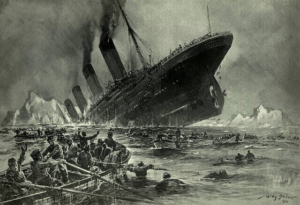
Sinking of the R.M.S. Titanic, April 15, 1912
The sinking of the Titanic was the first of several shocks the world of the early 20th Century would receive. Just two short years later, (July, 1914) for the first time in history, the entire world would be engulfed in the First World War. In 1918 when the war ended, over 10 million Allied & Central command soldiers were dead, not including civilians. The results of WWI set in motion the gears which led to the Second World War when Adolf Hitler invaded Poland in 1939.[2]
WW I also had a profound effect on some of the greatest artists (Picasso, M. Duchamp, etc…) and literary minds of the 20th century. Among them was J.R.R. Tolkein whose Lord of the Rings series came right out of his gruesome experiences of fighting in the trenches on the Western Front. One of his biographers makes a telling comment. He writes:
This biographical study arose from a single observation: how strange it is that J.R.R. Tolkein should have embarked upon his monumental mythology in the midst of the First World War, the crisis that disenchanted and shaped the modern era.[3]
“The crisis that disenchanted and shaped the modern era…”
What can we learn from this and the other tragedies of the last century?
QUESTIONS TO PONDER
In conclusion, I would like to ask if there are any lessons we can learn from these opening decades of the 20th Century? Are we, in the 21st Century, still clinging to 19th century ideals which lead to the disillusionment of so many? I assert that we certainly are. We are holding on to at least three of them and we are once again setting ourselves up for even greater disillusionment or even worse:
(1). Belief in the innate goodness of man. (Is human nature basically good?)
“The belief in the innate goodness of man had its roots in the eighteenth century when it appeared to many that man was born good and free but was everywhere distorted, corrupted, and enslaved by bad institutions and conventions. As Rousseau said, Man is born free yet everywhere he is in chains.
Obviously, if man is innately good and needs but to be freed from social restrictions, he is capable of tremendous achievements in this world of time, and does not need to postpone his hopes of personal salvation into eternity.”[4]
If the Twentieth-Century and our own experience has taught us anything, it is that man is not innately good – but has a fallen nature. People automatically don’t do the right thing and despite all of their valiant efforts[5], atheists & materialists fail to ground absolute goodness in reality. Similarly, if there is no God – no absolute standard, then there is no ultimate grounding for right and wrong (morality). If there is no God (in reality) then (in reality), there is no difference between Mother Theresa and Hitler.
(2). Secularism (Is ‘religion’ just a hangover from our past?)
Secularists have a strictly materialistic & mechanistic view of human nature and because of this they utterly fail to account for man’s religious nature which they will never eradicate nor will they understand with the methods of the sciences. For most of human history people have had the desire to worship. This is certainly not to say that all religions are the same or that they are all equally true, but merely to point out that the desire to worship and the desire for transcendence is part of what it means to be truly human.[6] Secularism just doesn’t get it! The ultimate question is which religion is true? Which religion corresponds to reality? If the laws of logic apply to all of reality then they apply to religious claims as well. Only one can be true.
(3). Faith in science (Will “science” solve our problems?)
“Science” is touted by many today as the only true view of reality and an inoculation against the claims of religious masses who still live in ignorance & stupidity. These are the ones who still believe that “science” will answer all of our burning questions and solve all of humanity’s problems. But lest we forget, we have the 20th Century as a guide. It is intimately familiar to us. We have lived through much of it. It is analogous to all of human history because of the simple fact that human nature remains the same and many are still trusting that “science” and the scientific worldview is the way forward.
Why are things not improving now in the first decade of the 21st Century – the most well-informed, well-educated and scientifically minded centuries to date?
Surely the sciences and technology have brought us much good (curing diseases, saving lives, etc…), but they are ill-equipped to solve our greatest problems which are spiritual & moral in nature.
Many critics will surely point to religious extremism and the turmoil happening in the Middle East as the prime example that “religion” is at the core of the world’s problems. They fail, however, to make vital distinctions between contradictory religious truth claims (especially in the Theistic religions of Judaism, Islam & Christianity). Yet it is only in the religion of Christianity – whose message is the reconciliation of fallen humanity (made in God’s image) to the Creator by the God-Man, Jesus Christ who died on a cross for the sins of the world – that there is hope for the future.
There simply is no unity, order or peace apart from Him.
[1] Carroll Quigley, Tragedy and Hope: A History of the World in Our Time (New York: Macmillan Publishing, 1966), pp. 24-5.
[2] And of course, WW2 ended with the dropping of the atomic bomb on the Japanese cities of Hiroshima and Nagasaki in 1945.
[3] John Garth, Tolkein and the Great War: The Threshold of Middle-earth (Boston: Houghton Mifflin Company, 2003), xiii.
[4] Summary of Quigley, p. 24.
[5] One of the latest is Sam Harris’s, The Moral Landscape: How Science Can Determine Human Values (New York: The Free Press, 2010).
[6] For an excellent study on the relationship between science and human nature I strongly recommend Brendan Purcell’s excellent work, From Big Bang to Big Mystery: Human Origins in the Light of Creation and Evolution (Hyde Park, New York: New York City Press, 2012).
It is widely believed that the German philosopher Friedrich Nietzsche ushered in the twentieth century with his famous phrase, “God is dead…”[1] Nietzsche himself died in 1900. Obviously, atheism didn’t start in the twentieth century with Nietzsche. In fact, he was the culmination (the pinnacle) of a long line of thinkers which reached back into the sixteenth and seventeenth centuries.[2] The European Enlightenment promised grand and wonderful things when human reason finally divorced itself from the shackles of faith.[3] Using the newly found tools of the “scientific method,” (via Bacon & Spinoza); a humanistic morality which was becoming increasingly devoid of God (via Nietzsche); and the burgeoning industrial revolution with its new technologies, the twentieth century was set to take mankind to new heights never before dreamt of – a utopia of sorts. Some who were wise, however, could see that “wicked things were written in the sky.”[4] The next century (the 20th) would either be wonderful or it would be a nightmare. Enter H.G. Wells novel, A Modern Utopia (1905), the book which inspired Aldous Huxley’s vision of the future in Brave New World (1932), and later, George Orwell’s Nineteen Eighty-Four (1949).
Both of these novels predicted a future in which mankind would be destroyed either by external oppression by a despot using technology (the big-brother of Orwell) or through technologies which would make us lazy and undo our capacity to think (Huxley).[5] In both instances, technology would somehow be used to lead to our undoing.
If there is no God (or at least since He died in the 19th century) then humans must put their hopes, dreams, and aspirations for the future in something. Enter the Enlightenment 2.0 – 21st-century edition – human reason, science, and technology will surely help us solve all of the world’s problems. How are we doing 13 years into this century? Not very well. Do we ever learn? Usually not.
Neil Postman makes a brilliant observation in, Technopoly: The Surrender of Culture to Technology (1992). An observation that we should etch into our heads.
Our most serious problems are not technical, nor do they arise from inadequate information. If a nuclear catastrophe occurs, it shall not be because of inadequate information. Where people are dying of starvation, it does not occur because of inadequate information. If families break up, children are mistreated, crime terrorizes a city, education is impotent, it does not happen because of inadequate information. Mathematical equations, instantaneous communication, and vast quantities of information have nothing to do with any of these problems. And the computer is useless in addressing them.[6]
The scientific, atheistic and materialistic worldview is utterly incapable of ensuring civilization. It can’t be trusted. Why? Because the last century has been one gigantic experiment in what it is capable of and also of what it is incapable of.
In my next post A Titanic Failure: Never Learning from Our Past, we will take a look at some epic examples of the complete failure of the European Enlightenment and materialistic atheism and what it could teach us about our future – if anything at all.
[1] See, “Thus Spake Zarathustra,” in Walter Kaufmann, Editor & Translator, The Portable Nietzsche (New York: Penguin Books, 1982).
[2] For an excellent book on the philosophical battles which ensued between various German thinkers on the role of reason during the era of the Enlightenment see, Fredrick C. Beiser’s, The Fate of Reason: German Philosophy from Kant to Fichte (Cambridge, MA: Harvard University Press, 1987); for a Christian analysis of the Enlightenment see, James Collins, A History of Modern European Philosophy (Milwaukee: The Bruce Publishing Co., 1954).
[3] Interestingly, the modern Internet & Wikipedia had its birth in the Enlightenment with the idea of the Encyclopédie which was published in France 1751-1772.
[4] To borrow the line from Chesterton’s poem “The Ballad of the White Horse” – a poem about England’s Saxon king, Alfred the Great.
[5] I am indebted to Neil Postman for this observation in his excellent book, Amusing Ourselves to Death: Public Discourse in the Age of Show Business (1985). Postman’s thesis is that Huxley was right. History has proven that he was correct.
[6] Technopoly: The Surrender of Culture to Technology (New York: Vintage Books, 1992), p.119.


